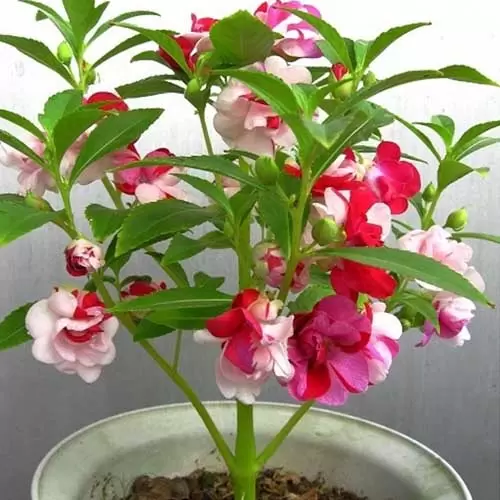BALSAM FLOWER

Balsam Plant Information
Balsminaceae impatiens is a common sun to partial shade flowering annual. It is easy to grow and widely available at nurseries and garden centers. Impatiens balsamina is known by the common name balsam or by the umbrella moniker of impatiens, which covers a wide variety of forms and tones. Balsam may also be found as “Rose Balsam.”
Sun is a powerful source of energy which is wisely leveraged by these plants through this process of ‘solar tracking’. That’s the reason why sunflowers are also known as happiest of all flowers! The powerful vibrancy of these flowers provides mental, physical as well as spiritual energy to those around it!
The flowers bear double petals and come in an array of colors but are partially hidden by large attractive leaves with pronounced veins. Balsams come in white, red, orange, yellow, violet, and pink. These flowers resemble mini roses or camellias with the thickly spaced petals and tones.
Some fun balsam plant information is found in another of its names: touch-me-not. The name is owing to the end of season pods which form and burst at the slightest touch.
Caring for Balsam
Balsam needs moist, well-drained soil and performs best in partial shade locations. Amend the soil with compost and break up clods before transplanting young balsam. Spacing is 12 to 18 inches apart.
Water the plants from below to help prevent powdery mildew. A soaker hose or drip line system will assist with this method of watering. The plants will need supplemental watering at least once a week in the dry months. More frequent watering is necessary when caring for balsam in containers and hanging baskets.
Collect the seed pod carefully at the end of the season for another year of rose balsam beauty in your garden. Let the pod dry and keep in a closed plastic bag or jar in a dark, cool area of the home until spring.
Question & Answers
Don't get what you are looking for? Ask Question